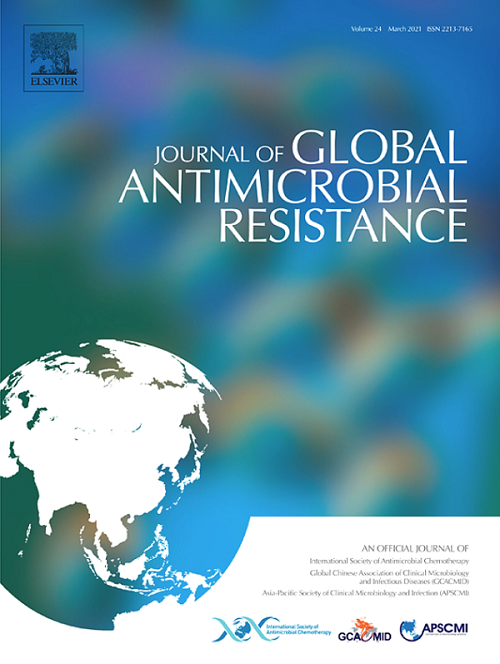Pharmacokinetics of colistin in patients with multi-drug resistant Gram-negative bacterial infections
IF 3.7
3区 医学
Q2 INFECTIOUS DISEASES
引用次数: 0
Abstract
AIM
This study aimed to characterize the first-dose and steady-state pharmacokinetic parameters of colistin in critically-ill patients.
BACKGROUND
Increased prevalence of multidrug resistant Gram-negative bacterial infections among critically-ill patients has revived the use of colistin. There is a dire need to characterize the pharmacokinetics of colistin to find out the dosing required to achieve the optimal pharmacokinetic/pharmacodynamic(PK/PD) indices such as Cmax/MIC and AUC/MIC to ensure maximum efficacy and safety.
METHODS
In this prospective observational pharmacokinetic study, we studied the first dose and steady state pharmacokinetics of colistin in 16 critically ill patients who received a loading dose of 9 million IU of colistimethate sodium (CMS), followed by maintenance dose of either 4.5 million IU twice daily (n=9) or 3 million IU thrice daily (n=7). Plasma levels of colistin were estimated using LC-MS/MS and pharmacokinetic parameters were estimated using non-compartmental model.
RESULTS
We observed a wide inter-individual variability in the pharmacokinetic parameters of colistin. No significant difference was seen in the steady state pharmacokinetic parameters between two different maintenance dosing regimens. Clinical resolution was seen in 8 (50%)patients, nephrotoxicity in 6 (37.5%)patients and bacteriological eradication following repeat culture was seen in 6 (37.5%)patients. PK/PD indices such as AUC/MIC and Cmax/MIC was higher in patients with clinical resolution and bacteriological eradication but this was not statistically significant.
CONCLUSION
The lower rates of clinical and microbiological efficacy, and occurrence of adverse events such as nephrotoxicity mandates the need for therapeutic drug monitoring of colistin and individualization of CMS dose for achieving optimal outcome.
求助全文
约1分钟内获得全文
求助全文
来源期刊

Journal of global antimicrobial resistance
INFECTIOUS DISEASES-PHARMACOLOGY & PHARMACY
CiteScore
8.70
自引率
2.20%
发文量
285
审稿时长
34 weeks
期刊介绍:
The Journal of Global Antimicrobial Resistance (JGAR) is a quarterly online journal run by an international Editorial Board that focuses on the global spread of antibiotic-resistant microbes.
JGAR is a dedicated journal for all professionals working in research, health care, the environment and animal infection control, aiming to track the resistance threat worldwide and provides a single voice devoted to antimicrobial resistance (AMR).
Featuring peer-reviewed and up to date research articles, reviews, short notes and hot topics JGAR covers the key topics related to antibacterial, antiviral, antifungal and antiparasitic resistance.
 求助内容:
求助内容: 应助结果提醒方式:
应助结果提醒方式:


